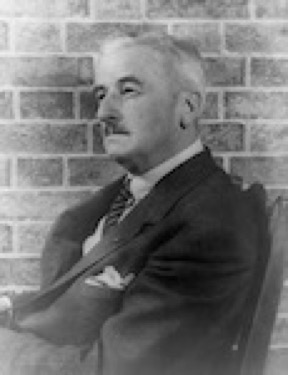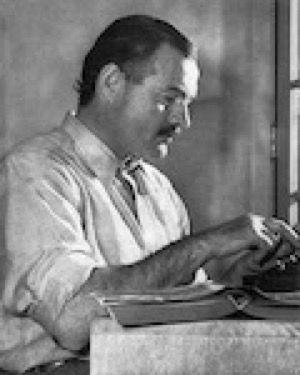Nobel Prize
Literary Critique - Looking for Mr. Green
September/02/2016 04:13 PM Filed: Literary Critiques

Photo Credit: Keith Botsford
(Wikimedia Commons)
The Quest for Identity
Published in 1951, Saul Bellow’s “Looking for Mr. Green” is the story of George Grebe, a government worker, and his quest for an elusive Mr. Green. Grebe delivers relief checks to homebound people in need. Set in inner-city Chicago, Bellow portrays a community struggling with poverty.
Mr. Green is a symbol of the downtrodden man with no real identity. No one knows him, and no one cares. Throughout the narrative, Grebe searches for a person who may not even exist. Every clue leads to nothing. Every lead takes him nowhere.
Bellow writes, “Why is consent given to misery? And why so painfully ugly?”
Though benevolent society tries to help the poor, attempts often fail due to interference. Before this money will reach the mysterious Mr. Green’s hands, numerous people will try to protect him from the law, or what can be perceived as unwanted government intervention. This may be Bellow’s message.
Literary Critique - Wine
August/19/2016 02:26 PM Filed: Literary Critiques

Photo Credit: Elke Wetzig
(Wikimedia Commons)
The Intoxication of Symbolism
In Doris Lessing’s “Wine,” a story published in 1957, a man relates his rejection of a beautiful woman who came to him one night after they had been drinking and singing with friends. Disclosing this so-called act of honor to his present girlfriend may seem reassuring on the surface, but beneath his poignant reminiscing is sexual dysfunction and an insecure, gloating delivery.
Lessing points to the glass in his hand without stating the obvious: alcohol incapacitates. He explains that this spurned acquaintance later had a love affair with his best friend, and he hints this was just to spite him.
“She hated my guts, and I suppose she was right,” he says with false assurance.
His current girlfriend pursues a companion unobtainable in the physical sense, so his affection is given in a different form. Lessing writes, “He put the wineglass into her hands; and she lifted it, looked at the small crimson globule of warming liquid, and drank with him.”
This final sensual act is a symbolic statement of tenderness, the only way he knows to offer himself to a lover.
Literary Critique - Barn Burning
July/13/2016 03:36 PM Filed: Literary Critiques

Photo Credit: Carl Van Vechten
(Wikimedia Commons)
William Faulkner and Class Consciousness
Faulkner’s portrayal of a boy torn between loyalty to his criminal father and need to protect the community is symbolic of the South’s slow progression to social justice. Like a child craving parental approval, the semi-reconstructed former Confederacy often sought the acclaim of its steadfast peers rather than make changes for the overall good of the United States.
In his 1939 story, “Barn Burning,” Faulkner named the young character after a fictional plantation owner, an educated Southern gentleman. With only Confederate interests at heart, this member of the country gentry was a hero only to his comrades.
The Union made significant attempts to control violence spurred by class differences and political power struggles, yet awareness of inequality determined status in every walk of life. Faulkner, a Nobel Prize winner, spotlighted the sad reality that the Civil War was not over. The impact of this bloody conflict disrupted the nation and placed all Americans on the defensive.
Faulkner writes, “He was a little stiff, but walking would cure that too as it would the cold, and soon there would be the sun. He went on down the hill, toward the dark woods within which the liquid silver voices of the birds called unceasing—the rapid and urgent beating of the urgent and quiring heart of the late spring night. He did not look back.”
Class consciousness is at the heart of this plot, recognition of what it is, and condemnation for what it accomplishes. In the last paragraph, Faulkner compares the sun to justice, the dark woods to slavery, and the silver voices of the birds to the emerging voices of freedom.
Literary Critique - The Chrysanthemums
June/01/2016 09:00 AM Filed: Literary Critiques

Photo Credit: Nobel Foundation
(Wikimedia Commons)
John Steinbeck and Overt Symbolism
In Steinbeck’s 1937 story, “The Chrysanthemums,” powerful symbolic imagery forms an underlying message. This Nobel Prize winner wrote to entertain and succeeded in creating the extraordinary.
The chrysanthemums are a symbol of a woman’s dormant sexuality. When a handyman stops by her home looking for work, Elisa’s attraction is apparent as she takes an unusual interest in his skills. She does not offer him a job immediately, but they talk about her flower garden. He likes her mums, and she gives him a bouquet.
Steinbeck reveals a hindered woman trapped in a male-dominated society. “Kneeling there, her hand went out toward his legs in the greasy black trousers. Her hesitant fingers almost touched the cloth. Then her hand dropped to the ground.”
Suggestive and competitive, Elisa’s need for equal status with this virile stranger emerges. She’s dissatisfied with traditional marriage and craves activities designated only for men. Later she notices he has abandoned her chrysanthemums in the road. This may appear to be the action of a rude, ungrateful lowlife, but in Steinbeck’s story the action symbolizes rejection and refusal to allow the woman to participate in a man’s exciting world.
In the end, Elisa resigns herself to a substandard, restricted existence and expresses desire to engage in the once forbidden activity that sheltered wives are allowed. She turns to her husband and says, “It will be enough if we can have wine. It will be plenty.”
Steinbeck’s overt symbolism captures the essence of women in a difficult state of transition as they emerged from the flamboyant, free-spirited 1920s and plummeted into the somber, Depression-ruined 1930s. His depiction of a humiliated rural woman makes a stronger impression than a history textbook.
Literary Critique - Hills Like White Elephants
May/26/2016 12:05 PM Filed: Literary Critiques

Photo Credit: Lloyd Arnold
(Wikimedia Commons)
Ernest Hemingway and Understatement
Understatement is characteristic of Hemingway. With a background in journalism, he wrote in a tight, distinctive style. His sentences are concise. His descriptions are straightforward. His dialogue is a rapid, back-and-forth delivery typical of real life.
Even when a story shows ambiguity, as seen in “Hills Like White Elephants,” a conclusion may be found in subtle narrative statements or pieces of dialogue. In a serious, though casual manner, a man is discussing abortion with his laid-back, pregnant girlfriend. He doesn’t want to push the procedure if she doesn’t want to do it. At the heart of this conversation is fear of losing freedom, as well as dread of taking responsibility for an unborn child.
The woman drinks through the scene in a Spanish cafe, and although it sounds as though both have agreed to abortion, the end hints at a different decision. “I feel fine,” she said. “There’s nothing wrong with me. I feel fine.”
Published in 1927, this frank discussion of a woman’s right to terminate a pregnancy was not typical of the decade of Prohibition and flappers. Racy feminists asserted their independence by drinking, smoking, and engaging in sex, but abortion was taboo. Hemingway’s portrayal of this woman is far from trite, even as he depicts her shrugging the matter off.
Or maybe she hasn’t. Her last statement indicates something is resolved in her mind. Asserting there’s nothing wrong could mean she has decided not to intervene, meaning no abortion. Perhaps Hemingway left his story subject to interpretation. Everyone will see a different conclusion, not a lack of resolution.